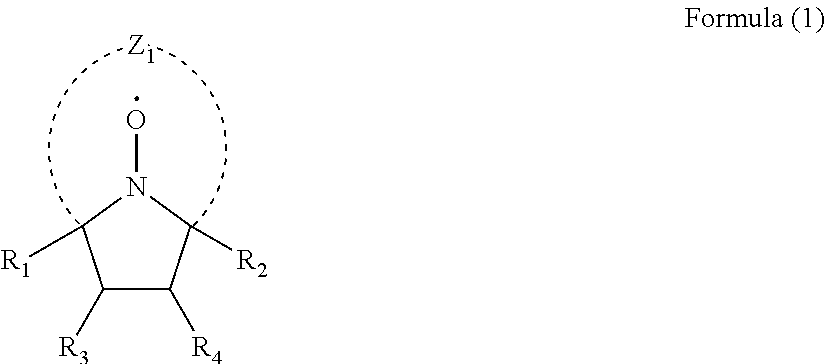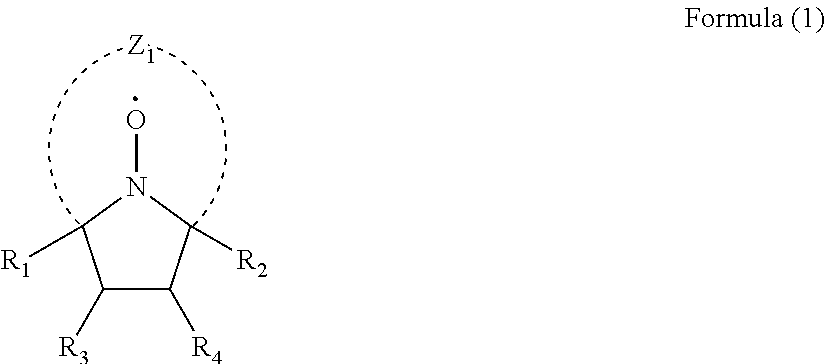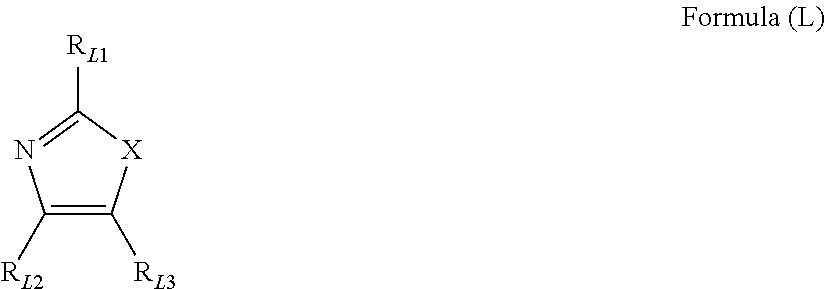Electrochemical display element
a display element and display element technology, applied in the field of electrochemical display elements, can solve the problems of difficult to say that such displays provide sufficient performance, limited reading posture, and increase in electric power consumption when reading, so as to reduce the variation of reflectance, high display contrast, and high white display reflectance
- Summary
- Abstract
- Description
- Claims
- Application Information
AI Technical Summary
Benefits of technology
Problems solved by technology
Method used
Image
Examples
example
Example 1
Preparation of Electrode
(Preparation of Electrode 1)
[0191]An ITO (Indium Tin Oxide) film having a pitch of 145 μm and an electrode width of 130 μm was formed on a glass substrate having a thickness of 1.5 mm and a size of 2 cm×4 cm by a commonly known method to obtain a transparent electrode (electrode 1).
(Preparation of Electrode 2)
[0192]A nickel electrode having an electrode thickness of 0.1 μm, a pitch of 145 μm and an electrode width of 130 μm was formed on a glass substrate having a thickness of 1.5 mm and a size of 2 cm×4 cm by a commonly known method, and the resulting electrode was further immersed in a substitution gold plating bath to obtain a gold-nickel electrode in gold substitution by a depth of 0.05 μm from the electrode surface.
(Preparation of Electrode 3)
[0193]A titanium dioxide film (about 4-10 particles having an average particle diameter of 17 nm, having been subjected to necking) having a thickness of 5 μm was further formed on electrode 2 to obtain ele...
example 2
[0211]The electrode, ink and electrolyte solution obtained in Example 1 were similarly used in Example 2.
>
(Preparation of Electrochemical Display Element 1-1)
[0212]A mixed solution in which 20% by weight of titanium dioxide CR-90 (produced by Ishihara Sangyo Kaisha, Ltd.) were added into an isopropanol solution containing 2% by weight of polyvinyl alcohol (an average polymerization degree of 3500 and a saponification degree of 87%), followed by being dispersed employing an ultrasonic homogenizer, was coated on electrode 2 whose peripheral portion was edged with an olefin sealant containing a glass-made spherical bead spacer having an average particle diameter of 40 μm at a volume fraction of 10% for the peripheral portion around the range of 2 cm×2 cm of a glass substrate center portion, followed by drying at 15° C. for 30 minutes for vaporization of the solvent, and subsequently drying at 45° C. for one hour. A glass-made spherical bead spacer having an average particle diameter of...
PUM
| Property | Measurement | Unit |
|---|---|---|
| reflectance | aaaaa | aaaaa |
| voltage | aaaaa | aaaaa |
| thickness | aaaaa | aaaaa |
Abstract
Description
Claims
Application Information
 Login to View More
Login to View More - R&D
- Intellectual Property
- Life Sciences
- Materials
- Tech Scout
- Unparalleled Data Quality
- Higher Quality Content
- 60% Fewer Hallucinations
Browse by: Latest US Patents, China's latest patents, Technical Efficacy Thesaurus, Application Domain, Technology Topic, Popular Technical Reports.
© 2025 PatSnap. All rights reserved.Legal|Privacy policy|Modern Slavery Act Transparency Statement|Sitemap|About US| Contact US: help@patsnap.com



